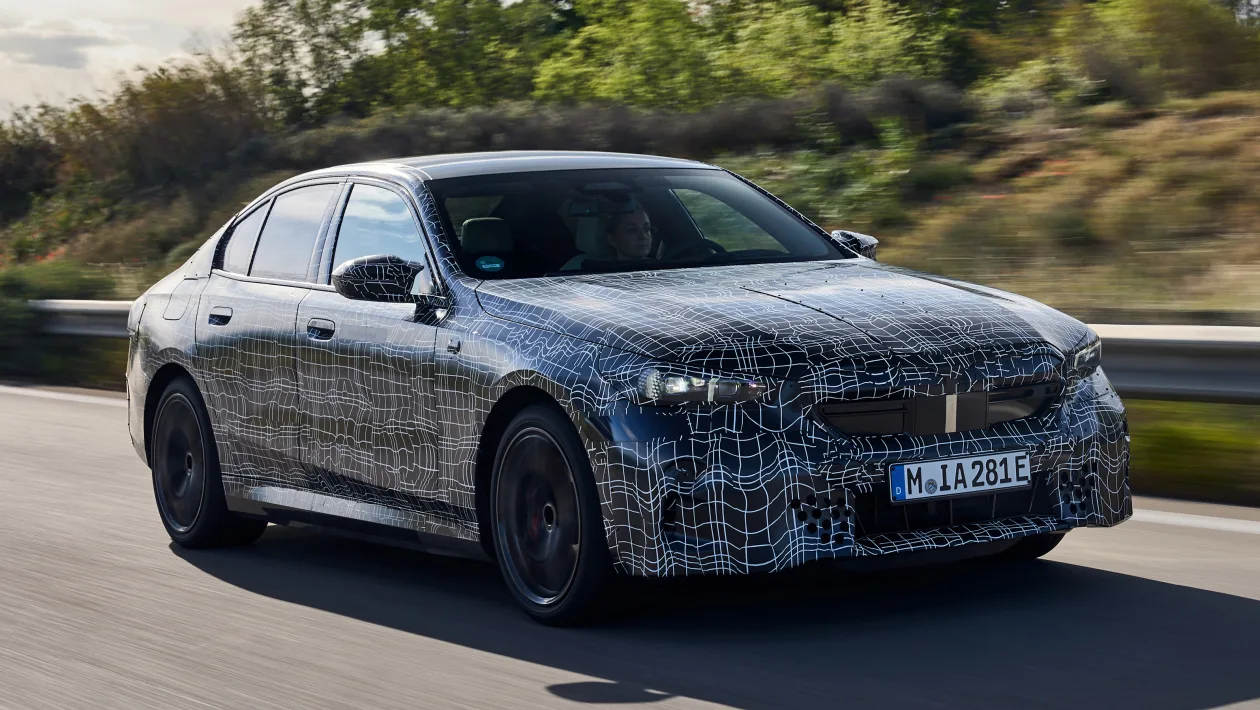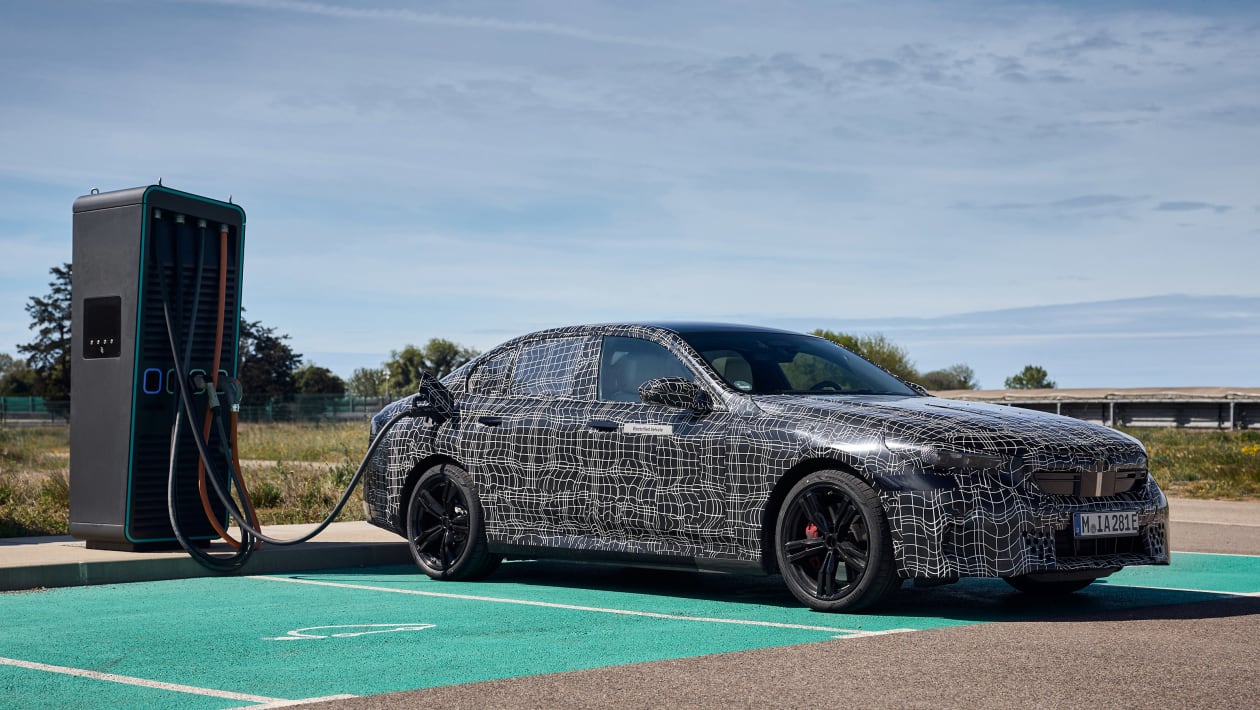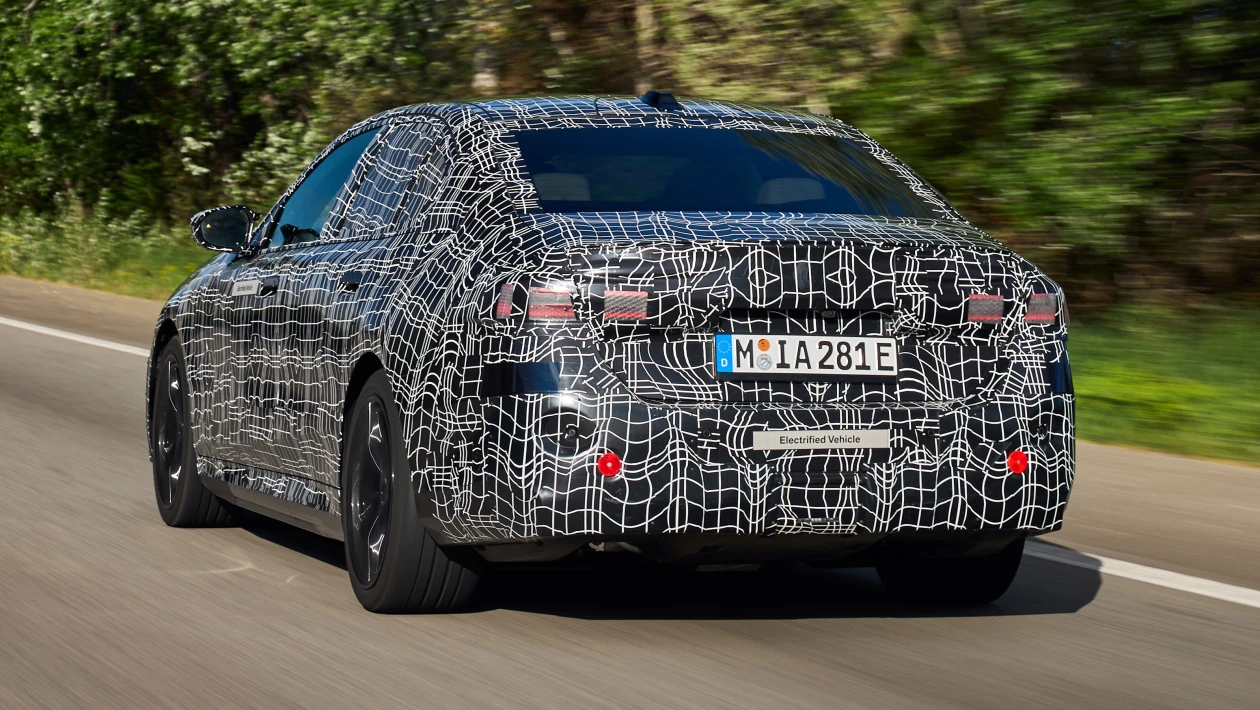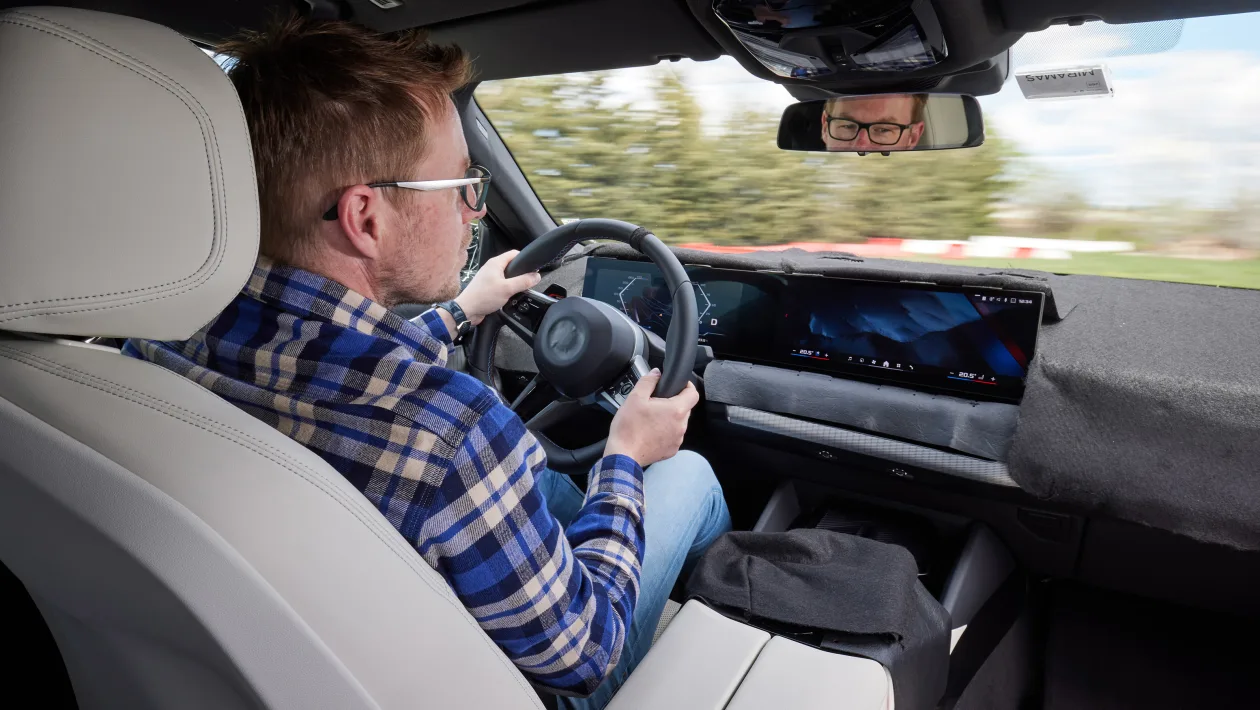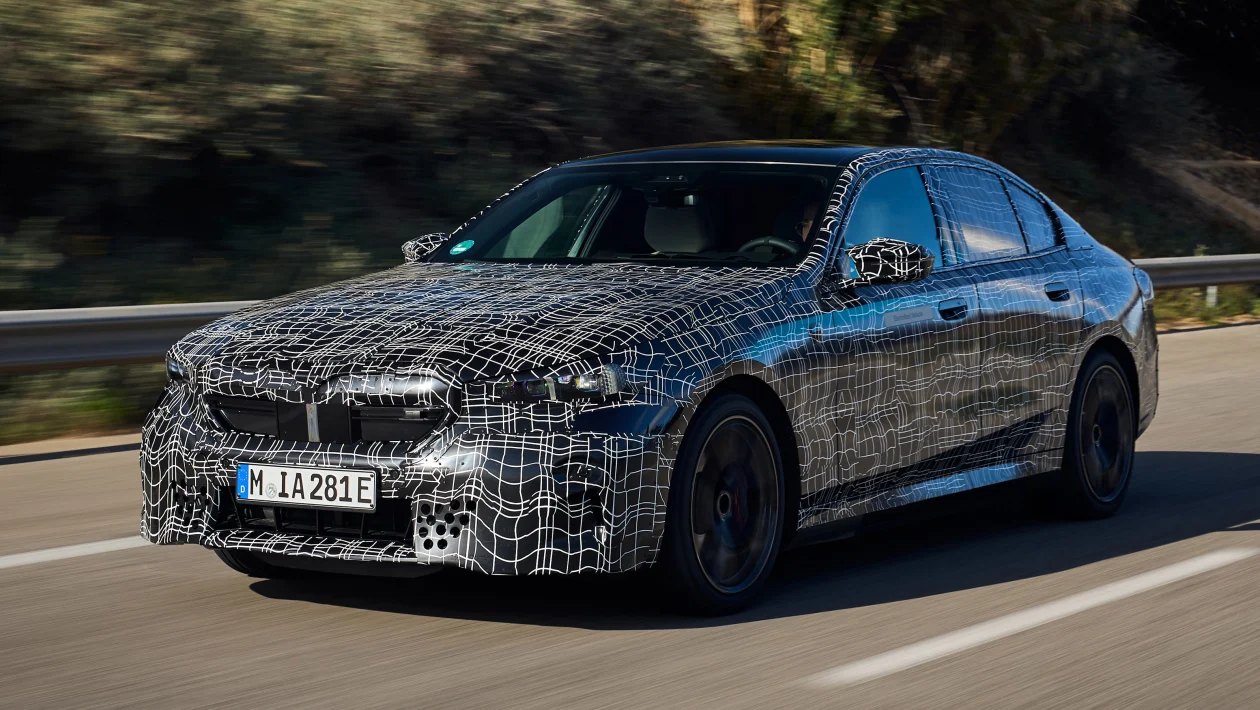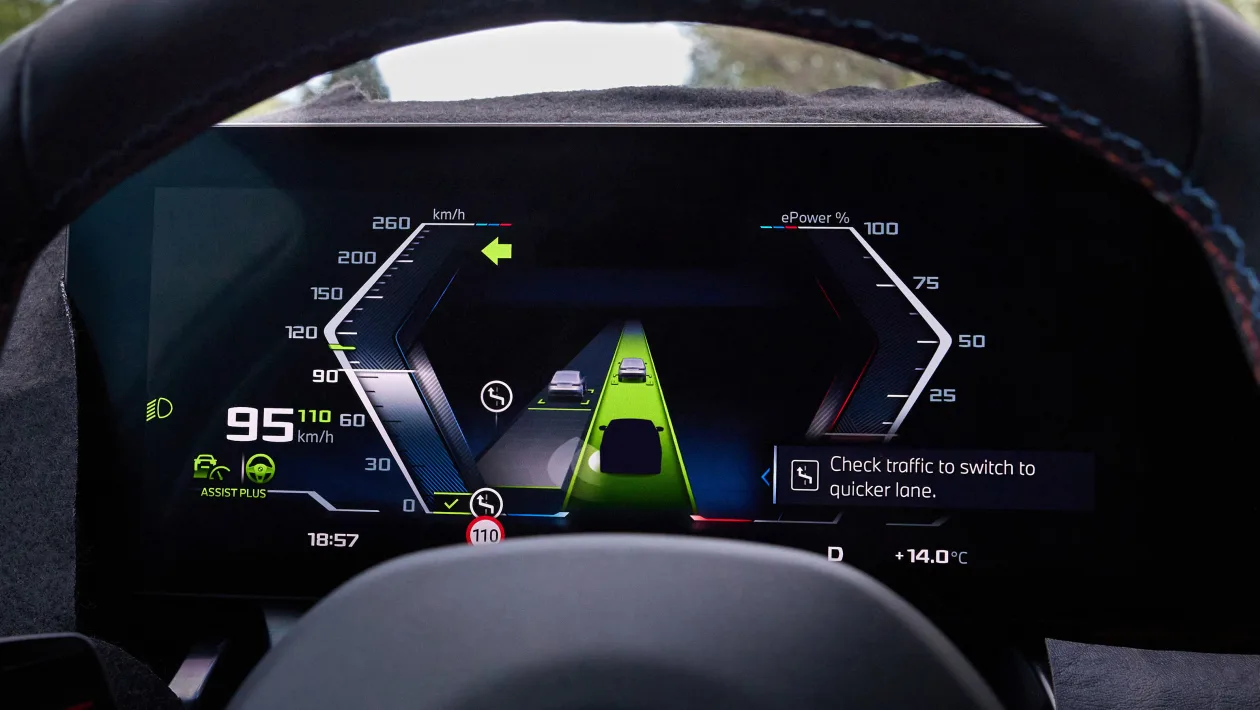We hit the road in the new all-electric BMW 5 Series ahead of its official arrival.
The importance of the i5 to BMW is as great as that of any car the brand has launched in a long time. The 5 Series is an iconic nameplate that has rich and lengthy history, BMW having shifted more than 10 million units over seven generations – and launching in conjunction with combustion-engined variants of the new 5 Series (with PHEVs to follow), this i5 is arguably the biggest step in more than half a century for the 5 Series.
But BMW is well placed to capitalise on the growing market for premium electric vehicles, having already exploited this with its pricey, polarising SUV (the iX), large, luxury limo (the i7) and sleek, sporty four-door (the i4). There’s the all-new iX1 at the more affordable end of the market, too.
The i5 takes familiar technology in some areas and evolves it for the next generation. It’s based on the firm’s CLAR platform (the all-new Neue Klasse architecture won’t go into production until 2025, underpinning replacements for the 3 Series and X3 models) with BMW’s fifth-generation eDrive motors fed by a battery that’s “less than 90kWh” in capacity, we’re told. For reference, the i4 uses an 83.9kWh pack.
We’re at the brand’s test facility in the south of France to get a first taste of what the all-electric 5 Series is like – and to assess whether the Mercedes-Benz EQE, Tesla Model S and Genesis Electrified G80 will be faced with something serious to worry about once the i5 likely goes on sale in Australia next year.
The answer is a resounding “yes”. The BMW i5 delivers the kind of balance between comfort, sportiness and agility that every 5 Series throughout the ages has – only the ability of this car has been widened even further, its spectrum of operation pushed at each end to offer both more comfort, and more dynamism.
Of course, the hard numbers are just as important to an EV (if not more so in some cases) as how the car feels to drive – and from what we can ascertain (BMW is keeping powertrain specifics a close secret), the i5 should be right on the pace in this area.
Two models will be available from launch – a rear-wheel drive eDrive40 variant and a dual-motor all-wheel drive M60 xDrive car – both powered by the same battery. The 250kW ’40’ car can achieve a maximum range of 583km, while this drops to a claimed 515km for the M60 on account of its extra power, with an output of 440kW. Expect maximum charging of “around 200kW”, so a 10 to 80 per cent charge should be easily completed in under 30 minutes.
The 40 feels fast enough (expect a 0-100km/h time of around six seconds). On the road the ‘entry-level’ rear-drive prototype’s instant punch pushes it forward in superb refinement. The accelerator pedal response is programmed to deliver linear performance proportional with how much you push it. It’s a simple and relaxing car to drive swiftly as a result.
The M60 is even punchier than the eDrive40, as you’d expect, with its xDrive system able to distribute torque between the axles flexibly. However, the character of the two cars’ drive systems is not that different. In the latter the numbers just hit you quicker.
It’s the chassis that makes a bigger impression. All i5s will feature air suspension on the rear axle, while our eDrive40 test car was fitted with adaptive dampers and rear-axle steering. There’s also new suspension control software, and combined the systems deliver superb ride comfort.
In the softest setting the adaptive dampers deliver a lovely, flowing feel, with even bumpy, rippled surfaces contained well and not upsetting the body. Sport tautens things up a little, but even on 20-inch wheels the i5 never felt overly firm or crashy. The M60 we drove also added active anti-roll control to the list of chassis systems, helping boost stability in quicker corners.
With learnings taken from the i4 and i7 – including a shear plate and a strengthening cross member at the front, reinforcing struts on the underside of the body at the rear, not to mention the extra rigidity provided by the battery sandwiched in the floor – the i5’s steering is direct and responsive. The rate at which the car turns could potentially fool you into thinking you were at the wheel of a 3 Series if you didn’t know better.
Rear-axle steering that turns by up to 2.5 degrees undoubtedly helps boost this feeling of agility, and you can sense the lack of lag between you initiating a steering input, the front axle responding and the rear following. It’s minimal.
Put simply, the rather complex engineering that’s gone into this can be quantified as ‘fun’. The i5 feels recognisably like a 5 Series to drive, but one that just so happens to be powered by electricity. It serves up similar characteristics to the outgoing car but amplifies these to greater heights, offering sophistication to its handling (it doesn’t feel like it has what will probably be a 2200kg-plus kerb weight on the move), its comfort and its cruising refinement.
Key to this last part is an evolution of the driver assistance systems seen on the 7 Series, making the new 5 Series the most advanced car BMW has built on this front. There are more than 40 driver assistance functions on BMW’s new executive saloon, supported by myriad cameras and a radar that can ‘see’ up to 300m ahead.
These combine to deliver a new ‘Highway Assistant’ feature that allows for full hands-off driving and automatic lane changing on motorways simply by looking at either the left or right wing mirror to pull in or out of a lane for an overtake.
When on a pre-mapped road that allows for this capability, the i5 will detect when you might want to make such a manoeuvre and give you a prompt on the digital dash. All you then have to do is simply check the relevant mirror to initiate it – it’s super-simple and intuitive as it uses an action we’re all so used to performing behind the wheel. A camera tracks where your eyes look and your nose points to determine if you’re paying attention to the road ahead.
It’ll be an option on the next-generation 5 Series and related technology already available in the US on the current-generation 7 Series costs around $3000.
We also had a peak under the i5 cabin’s cloth camouflage and found an interior that’s obviously inspired by the 7 Series when it comes to the tech, but with a more driver-focused design. The car features BMW’s latest curved digital dash and infotainment display, which will come loaded with the latest OS8.5 infotainment, featuring 5G connectivity.
From a more practical point of view, there’s what feels like a class-leading level of legroom in the rear, while the space penalty for going electric with the i5 compared with its combustion-engined counterparts in the new 5 Series line-up is, we’re told, “minimal”. However, BMW wouldn’t divulge exactly how much luggage space the new car offers. For reference, the outgoing 5 Series serves up 530 litres in 520d form.
First impressions suggest BMW is onto a winner with the i5. While the numbers are no more than on par with rivals, our short test highlighted that the new car’s breadth of ability means it’s both more comfortable and more sporty than ever. The tech will back-up this evolution of core attributes, offering some sophisticated assistance and infotainment features.




